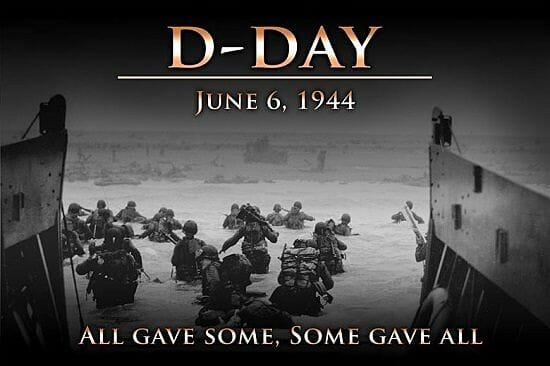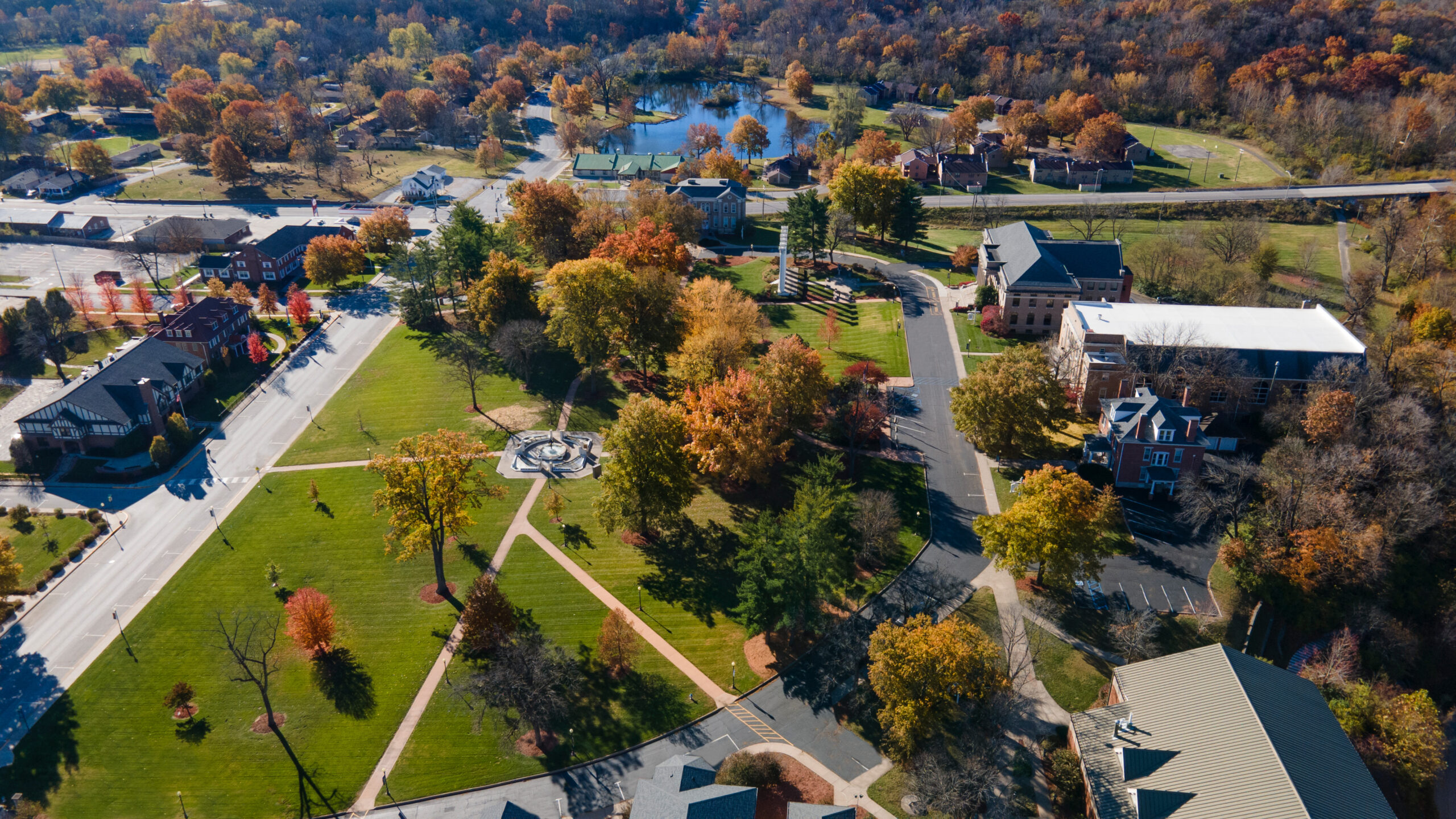The public is invited to attend a special service at America’s National Churchill Museum on June 6. The service honors all veterans on the 75th Anniversary of D-Day .
Three St. Louis-area World War II veterans and a fourth veteran from Detroit will be honored Thursday, June 6, 2019, during a 75th anniversary D-Day ceremony at America’s National Churchill Museum on the Westminster College campus in Fulton, MO.
The commemoration service will begin at 11 a.m. in the Church of St. Mary the Virgin, Aldermanbury, part of the museum, at 501 Westminster Avenue in Fulton. The public is invited as are all WWII and other military veterans. Afterwards, the Museum will be opened free for all visitors until 4:30 p.m.
Of the four World War II veterans to be saluted, three were among the 106,000 Allied forces from the United States, Great Britain, Canada, and other Allied countries who were engaged in battle on or over the five beaches code-named “Utah,” “Omaha,” “Gold,” “Juno,” and “Sword” in Normandy, France, on D-Day, June 6, 1944. Other Allies who took part in D-Day operations were Australia, Belgium, Czechoslovakia, France, Greece, New Zealand, the Netherlands, Norway, and Poland.
Dubbed “Operation Overlord,” the invasion of Normandy – the largest seaborne invasion in history – was planned by President Franklin D. Roosevelt and British Prime Minister Winston S. Churchill and conducted under the leadership of Supreme Allied Commander General Dwight D. Eisenhower.
D-Day marked a decisive turning point in WWII and changed the course of history because the invasion helped liberate France from the Nazis, and less than a year later, on May 7, 1945, Germany surrendered.
The four veterans, representing D-Day troops and other WWII GIs are as follows:
- James Dale “Jim” Feltz Sr., 94, of St. Peters, MO, is a highly decorated U.S. Navy veteran who served aboard the U.S.S. Plunkett, assisting convoys in the North Atlantic; participated in the invasion of North Africa, the axis boot of Sicily, and the Battle of Anzio; screened transports off Omaha Beach on D-Day; aided in the shore bombardment at Cherbourg, France; and, later landed in Japan with the first occupation troops.
- Claude Brauer Friend, 93, of Luebbering, in Franklin County, MO, is a highly-decorated Purple Heart recipient who served in the U.S. Army as a member of the 23rd Infantry Regiment, 2nd Infantry Division, Heavy Weapons Company H, who was sent to Normandy Beach as one of the first of the invasion forces on June 6, 1944. His unit fought their way across France through the summer and fall, crossed into Belgium, and courageously fought in the Battle of the Bulge in December 1944 and January 1945, the last major German offensive on the Western Front during WWII.
- Richard Toshio “Dick” Henmi, 95, of Webster Groves, MO, is a WWII officer who escorted 1,400 German POWs back to Germany on a ship and by train during WWII. He was later assigned as a member of General Dwight D. Eisenhower’s division to Karlsruhe, in Munich, where he was responsible for guarding trains and railroad yards in the southern part of Germany and Austria, and guarded shipments into Switzerland and Italy.
- Morton E. Harris, 98, of Detroit, MI, is a Churchill Fellow and a highly decorated U.S. Army Air Force veteran who successfully completed more than 33 combat missions over occupied Europe, was shot down by enemy fire twice, successfully delivered arms to French freedom fighters who fought in support of the Allied troops, struck coastal defenses and communications networks, flew two early morning sorties during the D-Day invasion of Normandy to attack enemy strongholds at Caen, was a squadron commander in the 95th Bomber Group of the 8th Air Force, and, later flew the first U.S. military mission to Berlin, headquarters of the German military.
The commemoration ceremony will include selected readings by Churchill, Eisenhower, and Roosevelt, and letters from those who landed on the beaches of Normandy on D-Day.
Also taking part in the ceremony will be retired four-star U.S. Army General Frank J. Grass of Arlington, VA, who is a native of Arnold, MO. He is a former member of the Joint Chiefs of Staff, who oversaw Army and Air National Guard personnel, and served as a military adviser to the President, Secretary of Defense, and National Security Council during the Obama Administration. He also was the Department of Defense’s official channel of communication to Governors and State Adjutants General on all matters pertaining to the National Guard.
“During World War II, more than 16 million Americans served in the U.S. military, with 405,399 killed or missing in action, and more than 671,000 were wounded,” said Timothy Riley, the Sandra L. and Monroe E. Trout Director and Chief Curator of America’s National Churchill Museum. “The importance of the D-Day campaign cannot be overstated. It was the turning point in the liberation of France and ultimately ensured Allied victory in Europe.”
Riley said during D-Day, which went from June 6 through August 21, 1944, Allied forces landed more than 2 million soldiers in northern France and suffered more than 226,000 casualties, including nearly 73,000 troops who were killed or missing in action. More than 153,000 Allied troops were wounded.
“On the 75th anniversary of D-Day, we honor and salute those D-Day soldiers and all World War II veterans, whose numbers are sadly shrinking at a rate of about 350 a day,” Riley said. “Of the 16 million Americans who served in World War II, fewer than 497,000 were alive as of last September, according to the U.S. Department of Veterans Affairs
“All of the courageous men and women who fought in WWII to preserve liberty and freedom, especially those who made the ultimate sacrifice on the beaches of Normandy, deserve our deepest respect, admiration, and profound gratitude,” he added.
The ceremony will be live-streamed here beginning at 10:45 a.m. CDT, Thursday, June 6, from the Church of St. Mary the Virgin, Aldermanbury, a legendary, 17th Century Christopher Wren church that was relocated from Central London to Fulton as part of the museum.

Sarah Rummel Backer is the Director of Media Relations and Senior Writer at Westminster College in Fulton, Missouri. A proud Westminster graduate, Sarah has more than 20 years of experience in marketing and strategic communications in the areas of higher education, medicine, agriculture, and the private business sector.







You must be logged in to post a comment.